INSIDE ISSUE 19.33 | Aug. 14, 2020
 BIG STORY: SCETV is helping gaps in teaching with remote learning
BIG STORY: SCETV is helping gaps in teaching with remote learning
NEWS BRIEFS: Testing, testing, one, too few being done, lawmakers say
COMMENTARY, Brack: Remembering Floyd Breeland’s life of exemplary service
SPOTLIGHT: S.C. Hospital Association
ANOTHER VIEW, West: To be or not be in person in the classroom
FEEDBACK: Great piece on school choice
MYSTERY PHOTO: Spaghetti roadways
HISTORY: More Charleston firsts
SCETV is helping gaps in teaching with remote learning

By Lindsay Street, Statehouse correspondent | South Carolina has long invested in infrastructure that is becoming pivotal for public school students learning at home in the pandemic: television.
South Carolina Educational Television (SCETV)’s public broadcasting is known for helping young children learn from “Sesame Street” and “Super Why,” but its role shifted to aiding teachers with remote-learning in the early days of the coronavirus in the state.
Now as the new school year approaches, the broadcast network will expand K-12 programming while piloting an initiative that allows teachers to use its existing infrastructure to beam content into a student’s device, such as a tablet issued through a school, without the need for an internet connection.
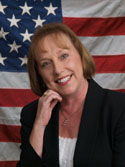
“I’m not saying it’s a replacement for broadband. I still want to keep that focus. It needs to happen, but I do think this is a great supplement to that,” Fort Mill Republican Rep. Raye Felder said. “It’s a perfect opportunity to continue educating outside of classrooms.”
Since 1957, SCETV has grown to cover nearly every household in the state with a network of 11 television stations and eight radio stations. Each can be picked up using an antenna and a TV.
“We can capitalize on what they’ve already done,” Great Falls Democratic Sen. Mike Fanning said.
From March 25 until June 5, the stations aired 259 hours of curriculum-based programming on its regular channels and shared the program schedule with school districts around the state for teachers to include in their instruction. This will be expanded in the fall, according to SCETV.
Didn’t know about it? An SCETV survey of mostly teachers found that about 37 percent used the At-Home resources as part of their teaching curriculum. And while SCETV presented its work at the House Education and Public Works Committee meeting Aug. 4, not all lawmakers and staffers got the memo.

Fanning — an educator — said he was unaware of how SCETV is adapting content in the pandemic. He even asked school officials at eight districts about it and heard crickets, he said.
Felder said she’s aware of the disconnect.
“I don’t think the public is aware of how much SCETV stepped in early on when we closed down the schools. ETV immediately altered its programming to give students an opportunity to at least watch lessons,” she said. “As the new school year starts, more and more districts will try to come up with innovative and creative ways to notify parents of all the options that are available and I’m hoping ETV will be one of those … Every household may not have a computer, more households have television.”
SCETV Vice President of Education Stephanie Frazier said the agency has worked over the summer to spread awareness, mostly through schools and teachers.
“The effort has been there but we are in the middle of a pandemic,” she said, adding that there has been some marketing on radio, TV ads and more for the general public.
‘Rooted in education services’
In the 1970s, SCETV expanded its reach into nearly every home in the state and began offering closed circuit programs inside schools, higher education and other state agency training. In 1998, it launched an initiative to prepare children for the first grade. In 2004, it launched StreamlineSC, a resource offering more than 10,000 educational videos, corresponding lesson plans and quizzes for every public and private school in the state.
In short, the educational content was mostly already there. So the initial pivot on programming to help supplement teacher lessons took only days to implement.
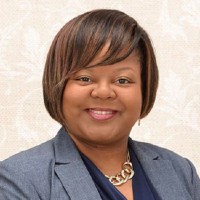
“Our mission is rooted in education services,” Frazier said.
She said morning content on the television channels focused on younger children, and content from 1 p.m. to 4 p.m. focused on middle school- and high school-content on a variety of subjects. Schools were sent schedules so teachers could notify students of content, she said. The educational program schedule was also published online at SCETV.org so guardians and parents can also help students tune in.
“We had the ability to make some modifications and we have a robust inventory of educational resources,” Frazier said.
While the broadcasted lessons relied mostly on the agency’s existing inventory of educational programming, the agency is working to record some teacher-led lessons for the fall, Frazier said.
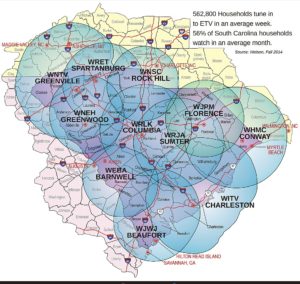
The content is supposed to supplement virtual teaching or packets that were sent home. Frazier said the agency offers reflection worksheets for students.
SCETV also debuted this summer a series on YouTube with “Storytime” to combat a student slide in summer reading, and has worked to instruct 5,000 teachers on using SCETV resources and teaching virtually since March, according to Frazier.
Old infrastructure, new technology
The agency is also looking at using its old infrastructure in new ways.
Public agencies have used technology for public safety and public emergencies for years — think of emergency threat texts sent directly to a smartphone. So what if school lessons could be delivered that same way?
That’s the idea behind SCETV’s latest pilot program called datacasting (data plus broadcasting). The technology reportedly converts a portion of the existing SCETV broadcasting infrastructure for one-way transmission of data.
The pilot program began in April and includes school districts in York, Laurens, Fairfield and Jasper counties, according to Frazier.
The data does not go into television sets (although it could eventually, Frazier said) but is sent directly into a device, which could be a parent’s smartphone or a tablet offered through the school district, according to Frazier.
“We are able to use our existing infrastructure so we can at least get started,” she said.

SCETV Commissioner Ray Sharpe, who works with cable companies, said the technology will be “quite helpful” for remote learning.
“Some of these areas are so remote that some providers are saying it could be five to 10 years before they have broadband services — that is a perfect example of how datacasting could help citizens of South Carolina,” he said.
Felder said the content can be “very individualized” from teacher to teacher, and down to just a handful of students.
“They can do this throughout the state with the towers already there and it does not require internet. The disadvantage is that it’s one-way information,” she said.
The state of South Carolina has received $15 million in additional CARES Act funds to enhance remote learning for students that live in rural areas, according to SCETV Director of Communications Jeremy Cauthen. Some of that money — though the exact amount is not known yet — will go toward expanding the datacasting initiative, Cauthen said. It will depend on the number of school districts and students participating in the initial datacasting pilot programs.
- Have a comment? Send to: feedback@statehousereport.com
Testing, testing, one, too few being done, lawmakers say
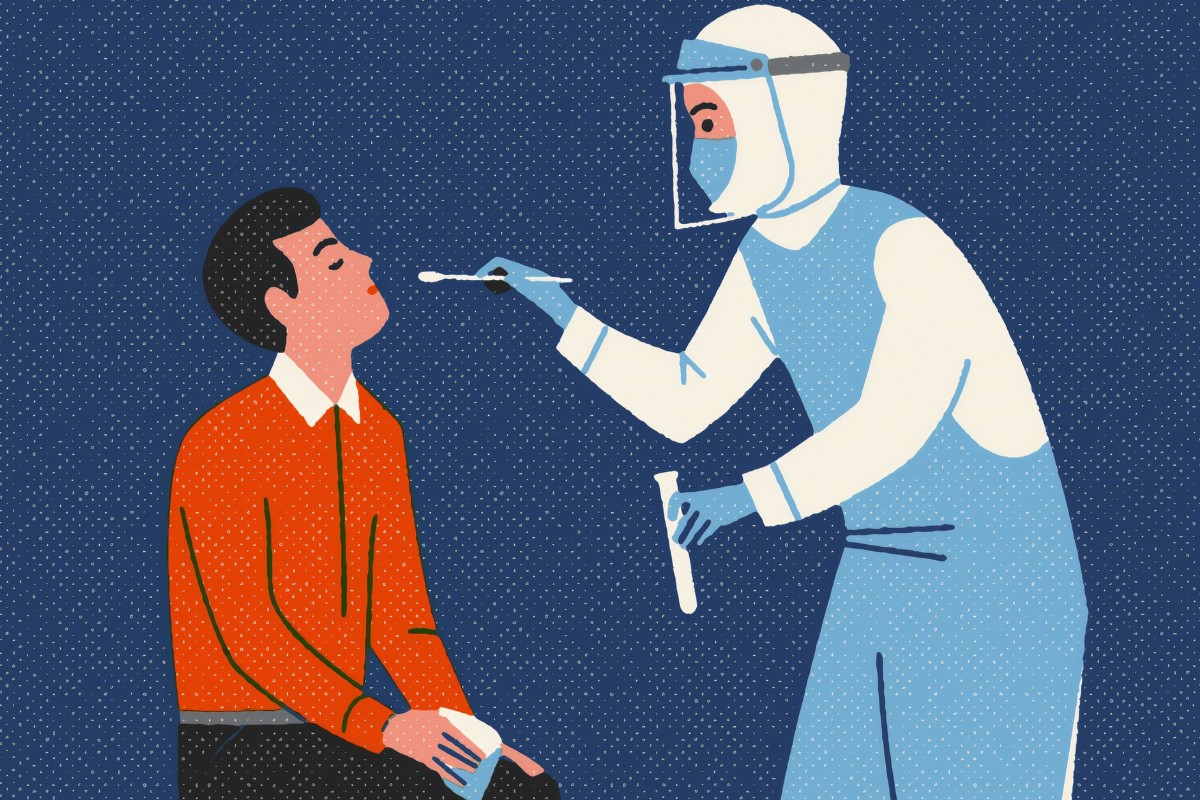
By Lindsay Street, Statehouse correspondent | South Carolina is seeing fewer and fewer coronavirus tests conducted, and the testing being done is experiencing delays, state lawmakers said this week.
A report issued by a panel of the Re-Open South Carolina Senate Select Committee Wednesday praised the state’s health agency for ramping up testing at more than double its goal in June, but said the state should be testing 10 percent of its population — about 500,000 people — each month. In June, the agency reported testing 5 percent of the population.
A COVID-19 testing tracker shows that South Carolina appears to be testing fewer people per day than it was in June and July. While the state was hovering around 10,000 tests per day at the beginning of the month, that has dropped to an average of about 5,000 per day this week.
The Senate report also called on the S.C. Department of Health and Environmental Control (DHEC) to work with Clemson University and University of South Carolina on development of a quicker saliva test, and using federal funds to provide free testing available to every person.
The Post and Courier reported Thursday that results from tests are taking as long as a week. The report also called on using federal money from the CARES Act to bolster the state’s personal protective equipment stockpiling efforts that can be made available to smaller providers and pay the state’s 25 percent share on funding the 800 National Guard troops deployed around the state beginning Aug. 22.
The legislature will reconvene in mid-September to dole out more money from the CARES Act, and the report called on state agencies like DHEC to send financial impacts to the Senate Finance Committee.
In other news:
![]() Masks appear to be working. DHEC released data this week showing that it appears widespread mask use is making a dent in confirmed COVID-19 cases, which dipped below 1,000 reported per day. This means instead of projecting more than 7,400 deaths by Dec. 1, the agency projects 3,671 deaths by Dec. 1. Already, the virus has claimed 2,089 lives as of Thursday.
Masks appear to be working. DHEC released data this week showing that it appears widespread mask use is making a dent in confirmed COVID-19 cases, which dipped below 1,000 reported per day. This means instead of projecting more than 7,400 deaths by Dec. 1, the agency projects 3,671 deaths by Dec. 1. Already, the virus has claimed 2,089 lives as of Thursday.
Democrat flips Trump pick’s S.C. House seat. Democratic candidate Spencer Wetmore is the unofficial winner of Tuesday’s special election (results will be certified Aug. 15, check here) to replace the seat left by former James Island Rep. Peter McCoy, a Republican tapped by the Trump administration as a U.S. Attorney for the District of South Carolina earlier this year. Wetmore, who is Folly Beach city administrator, defeated Republican Josh Stokes and Green Party candidate Eugene Platt for the seat. She will have to defend the newly-won seat again Nov. 3 from Stokes in the general election.
Lawsuit alleges sexual assault at DJJ melee. The S.C. Department of Juvenile Justice has been named in a lawsuit claiming that a December fight among girls housed at the department’s Midlands Evaluation Center spilled over into where boys were housed. At least four girls were sexually assaulted in the encounter, according to the lawsuit. The suit says the agency did not have enough security officers to protect the children and the officers did not have proper training. DJJ declined to comment due to pending litigation. Read more here.
- Related: After DJJ’s Broad River caught federal attention for use of isolation, its director says guards hesitated on intervening in violent incidents, subjected to attacks.
School district plans approved. The state Department of Education has approved all 81 school districts’ plans for fall instruction. All districts were required to have a virtual option available to all students. See all plans here.
S.C. among worst places to have a baby. WalletHub reported this week South Carolina is 49th for best places to have a baby — making the state second to last in the nation. (Alabama is last.) Among the data cited was the 2019 DHEC report on infant mortality, which showed huge racial disparity concerns. The state also ranked among last for its “baby friendliness” metrics which included parental leave policies, mom groups per capita, child care centers per capita, full weight birth rate, and state policy on Medicaid-covered parenting programs. Read the Wallet Hub study.
Shooting case renews calls for prison signal jamming. State officials say inmates are planning crimes via smartphones that have been smuggled into prisons. They found success in jamming technology at Broad River Correctional, but they are asking state lawmakers to pass legislation to aid in jamming cell signals at all state prisons in light of a case in which an inmate allegedly planned shootings from inside a prison. Read more.
Top state legislators tell high court to stay out of absentee voting. Republican House Speaker Jay Lucas and GOP Senate President Harvey Peeler want the State Supreme Court to dismiss a voter petition that seeks to expand the right to vote absentee in the upcoming November election. Read more.
McMaster pledges support of Trump’s jobless benefit. President Donald Trump ordered Aug. 7 up to $400 per week to be added to state jobless benefits, with about $100 of that coming from state coffers, that would be scaled based on a person’s previous income. That could add up to millions for a state like South Carolina, but Gov. Henry McMaster pledged support for the executive order this week. About 223,000 South Carolinians currently receive unemployment benefits. Read more.
Eviction crisis gets state, national attention. An estimate released Aug. 7 found that 30 million to 40 million renters are at risk of eviction during the pandemic depression, sparking fears for “the growing potential for widespread displacement and homelessness across the United States.” The National Low Income Housing Coalition report gained traction in national and state media outlets. Read the report here.
- Previous coverage: More than half of S.C. renters at risk of eviction.
- Have a comment? Send to: feedback@statehousereport.com
Remembering Breeland’s life of exemplary service
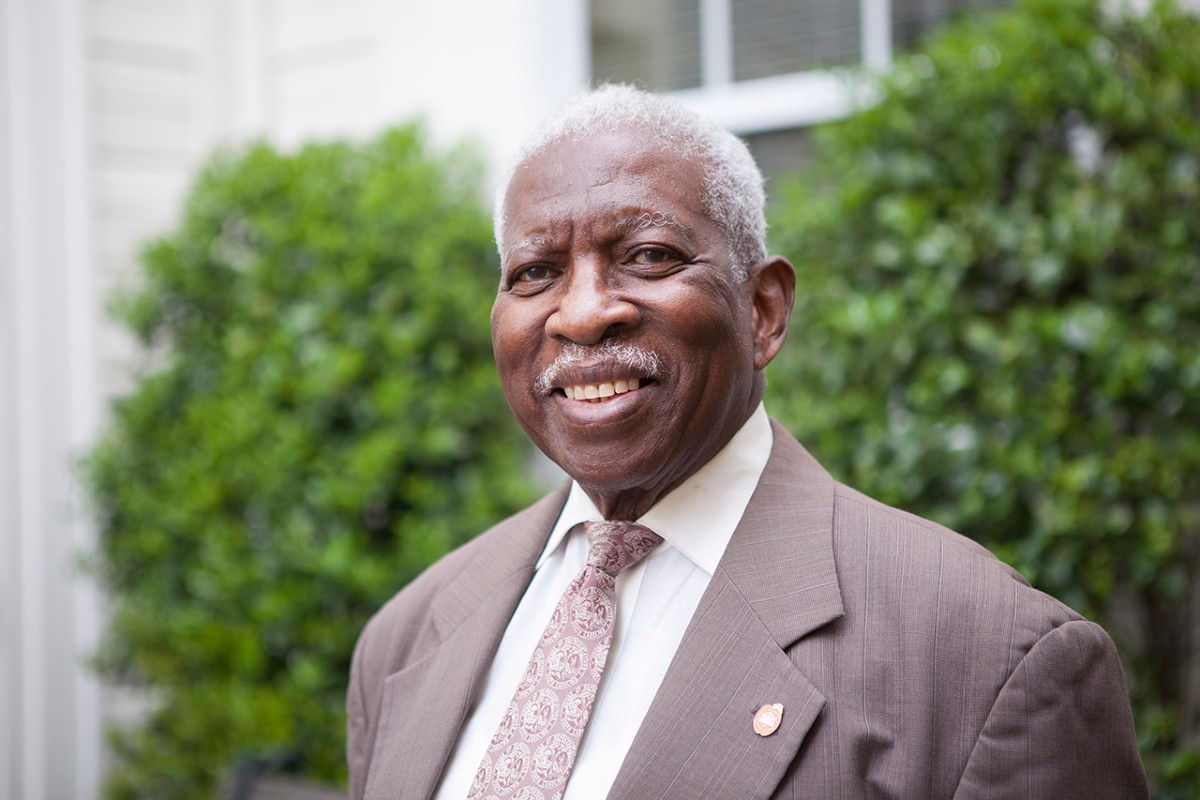
By Andy Brack, editor and publisher | They called him Big Thunder.
His rich baritone soared when he talked and resonated even more when he sang.
Former state Rep. Floyd Breeland, who passed away Tuesday at 87, loved public service, first as a teacher, then as a high school administrator and finally in the Statehouse. After representing the Charleston peninsula from 1993 to 2007, he continued to serve by running a College of Charleston program to encourage young Black men to be teachers and role models for kids.
 “Representative Breeland was a fine man and an exemplary public servant,” recalls House Speaker Jay Lucas, R-Hartsville. “We spent eight years serving in the House together, and I will always remember Floyd for his kind spirit and marvelous singing voice. His album still sits in my collection, and I will cherish it along with my many fond memories of him.”
“Representative Breeland was a fine man and an exemplary public servant,” recalls House Speaker Jay Lucas, R-Hartsville. “We spent eight years serving in the House together, and I will always remember Floyd for his kind spirit and marvelous singing voice. His album still sits in my collection, and I will cherish it along with my many fond memories of him.”
Many recalled how Breeland’s gentle but solid strength held sway when colleagues needed to be reminded of the right thing to do.
“Floyd Breeland was a quiet leader with a big heart for his fellow South Carolinians, especially the young people,” said former Gov. David Beasley, now head of the World Food Program. “He lived his life in service to them, as an educator and as a state representative.
“When I was working as governor on important education legislation, I knew that any feedback I got from him was honest and represented what he thought was best for the children of our state. Even as we miss him, we should all follow the example he set by being kind and humble every day.”
For years, state Rep. David Mack, D-North Charleston, sat next to Breeland on the floor of the S.C. House. Breeland was a confidant and friend.
“Behind that incredible smile was a giving heart,” Mack said. “He loved people. He blessed so many people as an educator and later as a legislator. We thank God for the time Floyd Breeland got to spend with us. Rest in peace, my brother.”
For Charleston native and Columbia lawyer Edwin Givens, Breeland was like an uncle, a longtime friend of the family.
“I could talk to him about things that sometimes I couldn’t talk to my dad about,” Givens wrote on Facebook. Later he added in an interview, “He was a selfless person — just someone who was always willing to serve. He never sought the limelight. He accomplished so much by not seeing the limelight, but getting the job done.”
Breeland, born and raised near St. George, moved to Charleston after graduating in 1955 from Allen University, where he was a roommate of Daniel Martin Sr., a former S.C. circuit judge and legislator.
Many remember Breeland’s 33 years as a Charleston music teacher and a high school principal. Others recall him in Charleston’s important first production of “Porgy and Bess” in 1970 during South Carolina’s tricentennial celebration.
“He used to tease me about my accent when I would pronounce ‘house,’ former state Rep. Jimmy Bailey of Charleston said. “I would look at him and say, ‘You understand what i am saying, but some of those from the Upstate don’t!’”
Others remembered the respect Breeland had for everyone.
“He worked for his constituents and always put them first,” said state Sen. Paul Campbel, R-Goose Creek. “He was a joy to work with and will be missed in our part of the world.”
Former state Rep. Vida Miller of Pawleys Island remembered Breeland’s smile, compassion and integrity. “In stressful moments on the House floor, he would take to the podium and sing in his wonderful bass voice — always calming and with a standing ovation. He was a gentleman and a true statesman. His earthly presence will be greatly missed, but the angels are rejoicing.”
Charleston Mayor John Tecklenburg said people throughout the city grieved.
“Floyd Breeland was a dedicated public servant, a faithful friend, and a kind and thoughtful neighbor, as Sandy and I had the pleasure of discovering when we lived down the street from Floyd and his remarkable family many years ago in Hampton Terrace. We join the whole Charleston community in mourning his loss, and in celebrating the extraordinary life and legacy he leaves behind.”
Floyd Breeland, 1933-2020. Rest in peace.
Andy Brack is editor and publisher of Statehouse Report. His column also is published in the Charleston City Paper, Florence Morning News, Greenwood Index Journal, The (Seneca) Journal, Camden Chronicle Independent and Hartsville Messenger. Have a comment? Send to: feedback@statehousereport.com.
S.C. Hospital Association
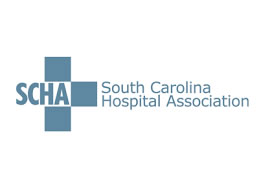 The public spiritedness of our underwriters allows us to bring Statehouse Report to you at no cost. This week’s spotlighted underwriter is the South Carolina Hospital Association, the Palmetto State’s foremost advocate on healthcare issues affecting South Carolinians. The mission of SCHA is to support its members in addressing the healthcare needs of South Carolina through advocacy, education, networking and regulatory assistance.
The public spiritedness of our underwriters allows us to bring Statehouse Report to you at no cost. This week’s spotlighted underwriter is the South Carolina Hospital Association, the Palmetto State’s foremost advocate on healthcare issues affecting South Carolinians. The mission of SCHA is to support its members in addressing the healthcare needs of South Carolina through advocacy, education, networking and regulatory assistance.
Founded in 1921, the South Carolina Hospital Association is the leadership organization and principal advocate for the state’s hospitals and health care systems. Based in Columbia, SCHA works with its members to improve access, quality and cost-effectiveness of health care for all South Carolinians. The state’s hospitals and health care systems employ more than 70,000 persons statewide. SCHA’s credo: We are stronger together than apart.
- To learn more about SCHA and its mission, go to: http://www.scha.org.
To be or not be in person in the classroom

By Gary West, special to Statehouse Report | On July 15, 2020, Gov. Henry McMaster lobbied for opening schools for all of South Carolina’s children – full classrooms, full-time, five days a week – while the pandemic continues to spread faster and farther.

Each school district in South Carolina has been required to submit a reopening plan to the South Carolina Department of Education (SCDE). And all those plans were required to have an option for parents to send their students to school.
Since the governor announced his plan to reopen all South Carolina schools, the following events have taken place:
- The South Carolina branch of the American Academy of Pediatrics (AAP) expressed concerns that its original position on reopening schools was being politicized. The AAP clarification indicates that the safety, health and well-being of students must be primary in reopening schools.
- The White House coronavirus task force listed South Carolina as a COVID-19 “red zone” state.
- As a result of full classrooms, hundreds of students and staff in Georgia’s public schools have contracted COVID-19 (including almost 900 student athletes) and thousands are being quarantined – after just one week in school. All involved schools have shut down or gone to online learning.
- South Carolina’s state epidemiologist has stated the governor has misled the public about her position on reopening segments of the state’s economy and schools.
- SCDE has approved all school district plans for reopening schools.
- The governor has instructed the state Department of Health and Environmental Control to “collect, compile, and disclose information regarding confirmed COVID-19 cases among students and staff in every school district in the state.”
New AAP research states that children’s counts and rates will go higher when the general population counts and rates go higher. The general population can protect children, teens and vulnerable adults only with “physical distancing, wearing cloth face coverings, washing our hands, and avoiding large gatherings” – none of which “red zone” South Carolina requires.
The AAP, the Centers for Disease Control and others have stated that states with positivity rates below 5 percent might consider in-person classes, with all the necessary health and safety measures in place. South Carolina continues to have positivity rates between 15 percent and 20 percent. If the coronavirus is still spreading at those rates, “it is inevitable it will follow students and staff to school” – and then back home – according to the AAP.
International and national research indicates children transmit the virus at the same rates and with the same potency as do adults. South Carolina’s school children can:
- be infected at school by other children and adults,
- infect other children and adults at school, and, importantly,
- take it home with them where vulnerable family members can be infected.
In South Carolina, young adults were not infected by and did not transmit the virus at high rates UNTIL the governor reopened the beaches, bars, lakes, etc. After that, young adults became a major driver of the virus across the state.
The events of the last few weeks and important new research indicate we can expect school-aged children to become another major driver when South Carolina’s public schools reopen in-person while the pandemic remains uncontrolled.
Parents in South Carolina are in a no-win situation. When their kids are sick with COVID-19, those parents must stay home. When other kids are sick with COVID-19 and schools are constantly in quarantine status, those parents also must stay home.
Parents who must stay home may lose their jobs. Those parents may not be able to qualify for unemployment and/or other stimulus benefits. This will be especially true for single parents because, historically, South Carolina has ignored its most economically vulnerable citizens. And isn’t that ironic – because this is all about the economy – isn’t it?
The school district data collected by DHEC will be meaningful ONLY if those data are used to make decisions about NEXT STEPS to protect children and educators, as well as their families and friends. If the school district data will not be used any better than the statewide data are being used, what’s the point?
The governor has set up South Carolina to fail. He still refuses to shut down the anti-maskers for the good of all South Carolinians. Eventually, he will have to shut down the economy again, whether he likes it or not. His demand for in-person instruction will cause teachers and students to miss more school than if reopening was delayed or done entirely online.
Governor, not to decide is to decide. If you don’t decide, the situation will decide for you. You may not like your options – but one of those will get it done; the other will just keep doing it to you – and the rest of us.
Gary W. West of Greenwood, a former chief information officer for the S.C. Department of Education, has worked in K-12 education for more than 50 years. More of his articles are available here. Have a comment? Send to: feedback@statehouse report.com
Great piece on school choice
![]() To the editor:
To the editor:
Fantastic editorial. (Gibson: It’s time to debunk the myth of school choice.)
As a lawyer who represented Edgefield County School District for over 30 years and also served as its superintendent, I applaud your editorial on school choice. Well-reasoned and written. Thank you!
— Greg W. Anderson, Edgefield, S.C.
Send us your thoughts
We love hearing from our readers and encourage you to share your opinions. But to be published, you’ve got to provide us with contact information so we can verify your letters. Letters to the editor are published weekly. We reserve the right to edit for length and clarity. Comments are limited to 250 words or less. Please include your name and contact information.
- Send your letters or comments to: feedback@statehousereport.com
Spaghetti roadways
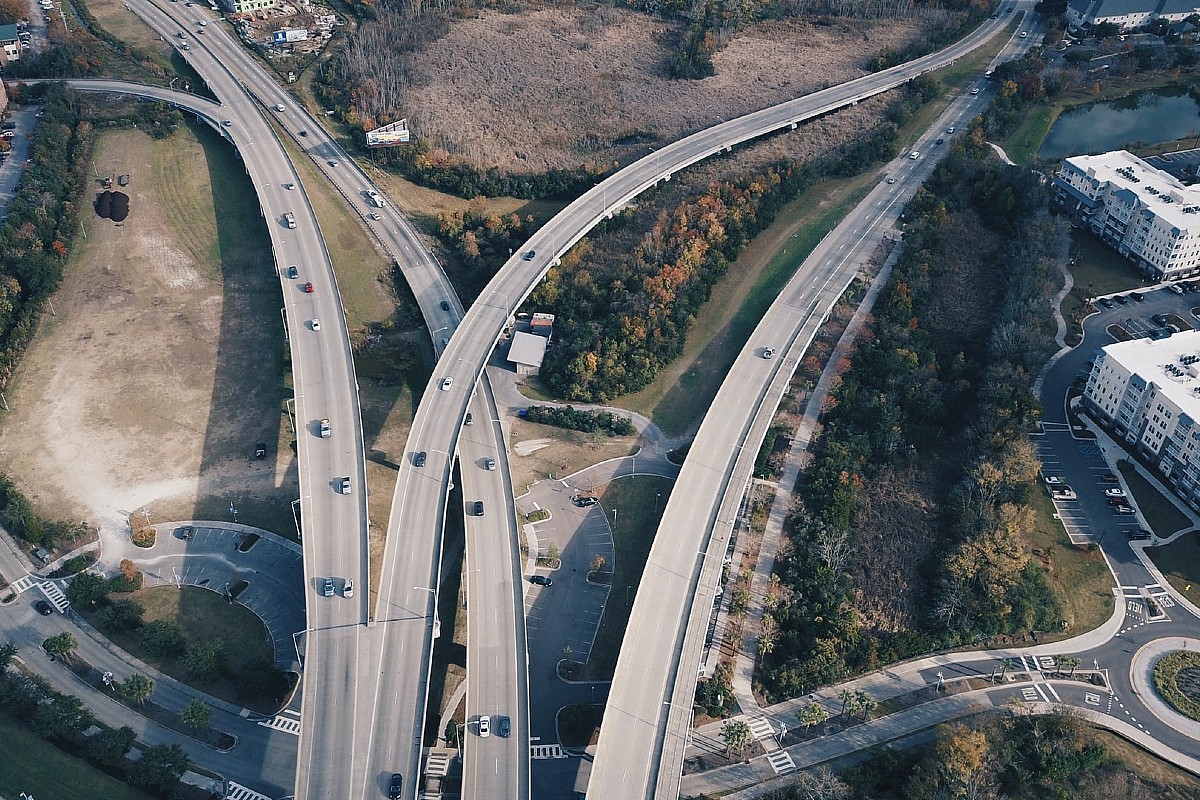
Here’s a combobulation of roadways. Where is it? Know anything else about it? Send your best guess of what it is as well as something about it. Send to feedback@statehousereport.com. And don’t forget to include your name and the town in which you live.
Our previous Mystery Photo
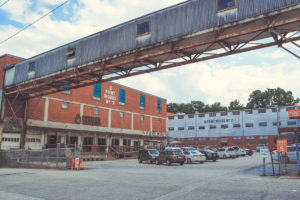 Our Aug. 7 photo, “Where’s this place?” shows the former Southern Bleachery and Piedmont Print Works in Taylors, which has been redeveloped as Taylors Mill, which includes creative spaces, a brewery and restaurant.
Our Aug. 7 photo, “Where’s this place?” shows the former Southern Bleachery and Piedmont Print Works in Taylors, which has been redeveloped as Taylors Mill, which includes creative spaces, a brewery and restaurant.
Hats off to these eagle eyes who identified the project: Dale Rhodes of Richmond, Va.; Jay Altman and Daniel Brennan, both of Columbia; Dave Comen of Anderson; David Lupo of Mount Pleasant; George Graf of Palmyra, Va.; Jacie Godfrey of Florence; Frank Bouknight of Summerville; and Liene Kukainis of Greenville.
Graf sent this information: “The brewery — which has adopted the theme of the American Revolutionary War, hence the reference to the 13 stripes of the American flag — inhabits an 8,000-square-foot space in the old Southern Bleachery portion of Taylors Mill, next door to Due South Coffee Roasters, in Taylors.
“Completed in May, 1924, the Southern Bleachery served as the backbone of the Taylors area from the time of its completion until its closing in 1965. Continually expanding, including the completion of the Piedmont Print Works in 1928 and the eventual merger of the two companies in 1938, the facility at its peak employed over 1,000 individuals, complete with its own mill village, company store, churches, baseball fields, and even golf course.
“The Southern Bleachery and Print Works processed goods produced at other mills in the Greenville area. The bleachery portion of the operations, which was housed in the west half of the complex, bleached and dyed fabrics while the printworks printed patterns onto materials while the print shop printed fabrics with various patterns.”
Send us a mystery: If you have a photo that you believe will stump readers, send it along (but make sure to tell us what it is because it may stump us too!) Send to: feedback@statehousereport.com and mark it as a photo submission. Thanks.
More Charleston firsts
 Here are three more factual snippets from the new book, 350 Facts About Charleston:
Here are three more factual snippets from the new book, 350 Facts About Charleston:
Nation’s first historic zoning district
Ever wonder why so much of old downtown Charleston is preserved? It’s because the Charleston City Council established the nation’s first historic zoning district on Oct. 13, 1931, when it created the “Old and Historic District” as well as a Board of Architectural Review, which continues to serve as an authority on new projects in an effort to preserve and protect historic neighborhoods. “Today, there are more than 2,000 restored old buildings, many having tiered porches called piazzas lining narrow brick alleys, cobblestone streets and walled courtyard gardens. These architectural treasures dating from the 1600s to the Civil War have been preserved and restored under the leadership of the Preservation Society of Charleston,” according to a 1989 story in The Los Angeles Times.
First paid woman artist in America
Henrietta de Beaulieu Dering Johnston (ca. 1674-1729) was the first professional woman artist in America. Born into a Huguenot family that moved to London in 1687, it is unknown how she learned to paint portraits, although they are in the style of a popular English artist of the time. She and her second husband, the Rev. Gideon Johnston, moved to Charleston in 1708 after he was appointed bishop’s commissary in South Carolina by the Bishop of London. Compared to earlier works, her portraits in America “are lighter, simpler, and smaller, indicative of the preciousness of her materials, all of which had to be imported. … Each sitter’s posture is erect, with the head turned slightly toward the viewer. Typically, large oval eyes dominate the subject’s face.” About 40 portraits remain. The Gibbes Museum in Charleston has 10, the largest collection of her work.
Oldest public gardens — and first Charleston tourist destination
Magnolia Plantation, founded by the Drayton family in the 1670s, is the oldest plantation on the Ashley River. It also “has earned the distinction as the oldest public garden in the United States,” according to Explore Charleston. “The Rev. John Grimké Drayton expanded the gardens in the 1840s, opening them three decades later to steamboat passengers. As a result, Magnolia also enjoys being Charleston’s first tourist destination.” In 2019, the attraction hosted “Lights of Magnolia,” a Chinese lantern festival illuminating the gardens for the first time in its history.
350 Facts About Charleston, a new book of historical facts commemorating the 350th anniversary of the city of Charleston, will be available in print in mid-September. Published by the staff of sister publication, Charleston City Paper, you can pre-order a copy today.
ABOUT STATEHOUSE REPORT
Statehouse Report, founded in 2001 as a weekly legislative forecast that informs readers about what is going to happen in South Carolina politics and policy, is provided to you at no charge every Friday.
Meet our team
- Editor and publisher: Andy Brack, 843.670.3996
- Statehouse correspondent: Lindsay Street
Donate today
We’re proud to offer Statehouse Report for free. For more than a dozen years, we’ve been the go-to place for insightful independent policy and political news and views in the Palmetto State. And we love it as much as you do.
But now, we can use your help. If you’ve been thinking of contributing to Statehouse Report over the years, now would be a great time to contribute as we deal with the crisis. In advance, thank you.
Buy the book
Now you can get a copy of editor and publisher Andy Brack’s We Can Do Better, South Carolina! ($14.99) as a paperback or as a Kindle book ($7.99). . The book of essays offers incisive commentaries by editor and publisher Andy Brack on the American South, the common good, vexing problems for the Palmetto State and interesting South Carolina leaders.
More
- Mailing address: Send inquiries by mail to: 1316 Rutledge Ave., Charleston, SC 29403
- Subscriptions are free: Click to subscribe.
- We hope you’ll keep receiving the great news and information from Statehouse Report, but if you need to unsubscribe, go to the bottom of the weekly email issue and follow the instructions.
- Read our sister publications: Charleston City Paper (every Wednesday) | Charleston Currents (every Monday).
- © 2020, Statehouse Report, a publication of City Paper Publishing, LLC. All rights reserved.















 We Can Do Better, South Carolina!
We Can Do Better, South Carolina!